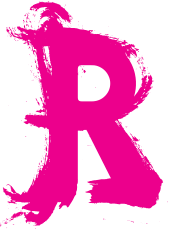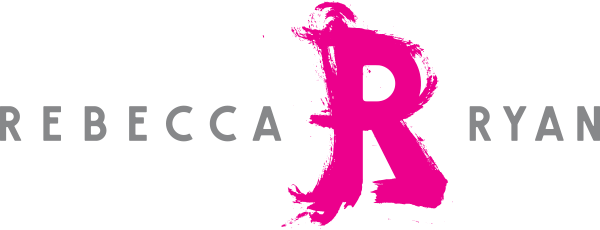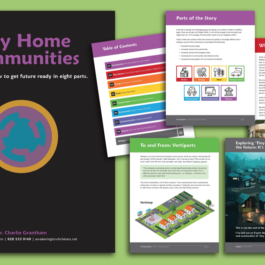What are the top 10 trends for the next ten years? Download the report here.
To break a habit, you don’t eliminate it; you replace it. Similarly, to strive for better than “back to normal,” start with imagining alternatives that are surprisingly successful or aspirational. What is it that you want to create instead of what we currently have? What is it that you wish to pursue and translate into norms and practices that make up the “new normal?”
We’re not talking about the “pie in the sky” variety of aspirational here. Rather, it’s the kind that is plausible, challenging (just beyond people’s comfort levels), and relevant to your arena of influence.
Imagining such things, however, can be extra difficult when we feel scared, furious, uncertain, isolated, helpless. Even in “normal” times, we tend to be naturally better at worrying and focusing on what comes to mind most easily. This is normal. This is human.
In this post, I’ll share a 5-step mental icebreaker game you can play to stretch your imagination and create a more creative, flexible, curious and futurist mindset. This version is an adaptation of a technique I learned via Jane McGonigal at IFTF. Use it on your own or with your team, and use the “Yes, and” principle to build on ideas. In the process, you’ll leverage another very human thing — our ability to rationalize almost anything. If you can invent reasons to eat that 5th red velvet cake ball in a row, you can do this exercise.
At the end of it, you will have a clearer idea of what assumptions you have about how things work today and ways to challenge those assumptions going forward. Optionally, you can go even further by pursuing your game results using Strategic Doing, a collaborative approach to take action today, in the next 7 days, the next 30 days and beyond.
Ready?
Step 1: Choose a topic.
Fill in the blank: The future of _______________. What is it that you would like to reimagine? “The economy” is too abstract and complex and “my stash of red velvet cake balls” is too specific. But the future of grocery shopping, jobs, housing services, or financial aid are examples that strike a balance between complexity and specificity.
To demonstrate the steps of this game, I’ll use “the future of jobs” as the topic with the following working definition: a “job” is a specific duty, role, or function; performed regularly for earned or passive compensation; and requires exertion. For example, a professional breather is not a job. But an Oxygen Therapy Technician is one.
Step 2: List facts about it that are generally true today.
The more facts you brainstorm the better. At least 25, preferably more like 100 so you can get beyond the most obvious ones.
Let’s look at some examples shared by our webinar participants with whom we played this game. In general, jobs today: are mostly provided by for-profit employers as opposed to non-profit ones; tend to be a vocation as opposed to avocation; exchange money for life energy; include unpaid positions, e.g., stay-at-home parents, homeschooling, volunteer; tend to pay women less than a man doing the same job; require skills, often both hard and soft; offer social status for job holders; provide different degrees of power or authority; are involved in a chain of command, hierarchy, with “lower level” ones looked down upon; offer personal satisfaction, engender a sense of purpose in duty (“call to work”); inspire dread (e.g., “a case of the Mondays”), stress; increasingly are flexible, not tied to an employer, and lack benefits and job security (e.g., Uber drivers); impact our social lives positively or negatively (e.g., lead to separation, living apart, divorce); have varying degrees of value, with some considered more “essential” than others; separate spirituality from economic output; and have unclear or missing contribution to the greater good, community impact.
Step 3: “Flip” your facts.
Rewrite each fact to be the opposite of what it is today or offer a new alternative. Make flipped facts sound neutral or positive. Flipped facts do not need to be coherent with each other. Feel free to use your favorite online search engine during this step to help you get ideas for new alternatives.
Below are some of the new facts suggested by our webinar participants. In general, jobs:
- Involve more community input as to what is important and what isn’t;
- Are mostly provided by “benefit corporations,” a type of for-profit corporate entity that by law pursues positive impact on society, workers, the community and the environment in addition to profit;
- Require no job-specific skills upfront and provide effective on-the-job training, apprenticeships;
- Are located in networks, not hierarchies, with powers and authority distributed through democractic principles;
- No longer determine access and affordability of essential needs such as healthcare, which instead comes with being a citizen;
- Allow job holders to work anywhere, any time, managing themselves;
- Provide equal pay for equal work;
- Pay in alternative or non-monetary compensation or by barter, e.g., pay in food and housing;
- Consistently support, recognize, and fund roles that are considered “essential;”
- Promote a work ethos of shared responsibility;
- Relate directly to climate change, water, air, resources, and investing in alternative energy sources for clean air and water;
- Provide increased parental leave benefits, e.g., in Ireland it’s 1-year pay;
- Provide high compensation and widespread high regard for those related to early childhood development; and
- Incentivize and support prevention as opposed to crisis management.
Step 4: Imagine and explain your new facts.
Imagine it’s 2030 and any one or more of your “flipped” facts is now true. Explain why this change happened. What’s it like to live in this future? Use what you know about how the world is already changing (current trends) to support this story. It doesn’t matter if it’s a strange or unlikely explanation. Feel free to do some research on trends to use in this step.
Here are some examples based on what our webinar participants shared:
- Over the years to 2030, lifelong learning and saving the environment are becoming the default. The coronavirus pandemic accelerated this trend, because the materials and efforts produced during that time boosted our ability to change jobs and careers to make them more environmentally friendly. Now the use of adaptive teaching and learning in academics and workforce development increasingly provide workers with seamless immersive transitions. Teachers are becoming highly trained and proficient with homeschooling. And education leaders are coming together to produce exceptional products that help with this shift. What’s more, formal and informal mentoring are growing widespread and effective for all.
- In the 2020s, organizations realize after repeated crises, government bailouts, and periods of furloughing and associated instability, that the lifeblood of their company lies in the “doers,” not the “overseers”. They shift to distributing wealth, support, and recognition in a manner that is more proportional to the perceived and actual importance of those positions because they want to keep and grow the business’ capability. As a result, the supply chain is becoming more consistent, employees are retained for longer, and morale is improving.
- By 2030, decentralized, distributed teams that give members equal authority have become the norm. Their practices are rooted in workplace culture experiments by design (formal research) and by circumstance (driven by the pandemic) that demonstrated how workers can in fact do well with determining their own work hours and tasks while being held accountable. Previously research had demonstrated how the combined collective has more knowledge and can make better decisions than a single individual. Workplace behaviors and philosophies that reflect these findings were accepted and operationalized widely over the 2020s. As a result, job roles are changing to provide opportunities where people are contributing and actually creating more, instead of solely managing. Employees are getting empowered to make decisions and be creative to solve problems, resulting in new innovations and the ability to serve customers faster. Peers are evaluating their team members, and compensation is getting based on performance as a team. In the process, teams are learning to successfully use each other’s strengths and advance knowledge with shared training. In effect they are working harder to be accountable and more productive, and a shared sense of responsibility is growing. As workers are gaining more opportunities to shine, many more are leading by inspiring rather than managing. They are also growing more mobile and choosing or co-designing their jobs in ways that make them happier.
- By 2030, health insurance is no longer tied to employment, employers, or location. That’s because in the 2020s companies continued to need more workers than were available. Decoupling insurance from employment enabled more and more people to move to more productive, well-paid, and rewarding work — shifting the value of work. On the flip side, some businesses are increasingly left with a chronic workforce shortage.
- In the 2020s, jobs increasingly involve more community input as to what is important and what isn’t. The coronavirus pandemic had sent a wake-up call that we don’t know what the future will hold. As a result, we are shifting to testing for natural abilities and matching abilities with community needs. Furthermore, educational and career development efforts are becoming more effective at nurturing generalists as opposed to specialists. Geography no longer determines access to talent and skills.
- Over the 2020s, we see more and more money going into prevention as opposed to crisis management. That’s because funding streams are changing to follow the research and support relevant policy development and implementations. As a result, increased early interventions are successfully reducing violence, drug use, literacy, and health outcomes (obesity prevention, heart disease). For every $1/spent on early childhood support and education before age of 5, we are saving $8.00 of future intervention. By investing in quality care and education up-front and paying worthy wages, we are increasing our investment by reducing crisis expenses and creating more connected, robust, and thriving communities. By 2030, investing in prevention first, as a fiscally and socially responsible approach, has become a fundamental operating principle throughout the economy.
Step 5: Analyze your responses and explanations.
In this last step of the game, you analyze your previous responses in two different ways.
5a. Based on Step 2, what assumptions did you uncover (true facts about today) that you now would say are most important to be challenged or questioned as you design for the future?
For example, jobs today involve assumptions such as the below.
- Earning a living wage typically requires working full-time, 40 hours a week.
- Productivity requires workers to be physically co-located during certain hours of the day.
- A profitable job is defined in terms of the job holder’s income and the employer’s spending.
- The bulk of recognition and monetary compensation goes to the leadership.
- Having a degree from a college or university is an effective way to prepare for jobs.
- Not all job holders get to make decisions on their own about when, where, and how to perform their work.
- Changing jobs is easier for some workers than for others.
- Jobs are a major source of benefits such as healthcare.
You get to decide for yourself which assumptions are “most important to be challenged or questioned.” Your choice(s) will likely depend on your interests and the context. Let’s take the bachelor’s degree as an example. Yes they can be an effective way to prepare for entry level jobs (in engineering, for example) and there is room for challenging which jobs those should be.
5b. Based on Step 4, what reasons for change were most compelling, or came up most frequently, as you crafted your stories about how anything could be different in the future?
In our jobs example, these reasons for change may include:
- Societal learning from repeated crises, government bailouts, and periods of furloughing and associated instability, and the successful dissemination and adoption of practices informed by this learning.
- Demonstrated successes from workplace culture experiments and the effective adoption of practices informed by these findings across a wide range of industries and teams.
- Increasing competition for human talent among companies fuels changes that increase workers’ ability to find and move to more productive, well-paid, and rewarding roles.
- Using the constraints and opportunities presented by the coronavirus pandemic to develop and adopt new norms and practices, such as measures that maximize job holder autonomy while maintaining effective accountability.
- Funding streams and incentives are adjusted in a timely manner based on research, making policy development and implementation increasingly effective.
Next Steps
Aaaaand congratulations, you have reached the end of the mental icebreaker game! Now you have a clearer idea of what assumptions you have about how things work today, and ways to challenge those assumptions going forward.
Next you can:
- Leave it here and consider it a warm-up for a new brainstorming session.
- Keep the results of your analysis in your back pocket, to draw upon as you go about your work or day and come across opportunities to question assumptions, propose ideas, or make design choices.
- Select one of your analysis results as a strategic outcome and use Strategic Doing with collaborators to explore and pursue it through doable projects with minimum startup costs and maximum impact.
What choices will you make? Here is to creating equitable, sustainable futures shaped by kindness, wisdom, and foresight.
If you enjoyed this post, please subscribe to our newsletter.

Yasemin Arikan
Yasemin (Yas) Arikan operates the research vessel. She is a futurist who uses foresight and social science methods to help clients understand how the future could be different from today and then use these insights to inform strategy and vision. Her work includes developing scenarios on the futures of public health, health care, society and technology for associations, foundations, government, and business. Bonus: Yas can help you take your gift wrapping game to the next level. And she can talk with you about it in English, German, or Turkish. Watch Yas' Q&A on how NGC helps organizations prepare for the future using Strategic Foresight.
Yasemin Arikan Promoted to Director of Futures Research
NEXT Generation Consulting (NGC) announced the promotion of Yasemin Arikan to Director of Futures Research. Arikan will lead the company’s efforts to...
Is Your Housing Market Ready for Your Future?
One of the biggest problems facing many cities and towns is inadequate housing. This problem is most acute for seniors, veterans with disabilities, and low-income groups ...
Three Things Martha Stewart Gets Right About Return to Office (RTO)
The original influencer and the person who invented the "Home" retail category, Martha Stewart, became the latest CEO to tell employees to get back to the office five day...









